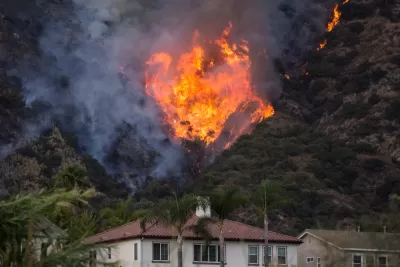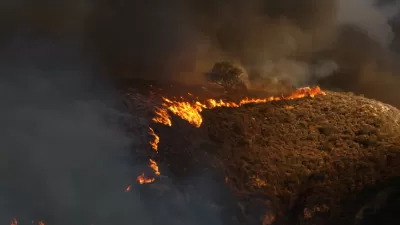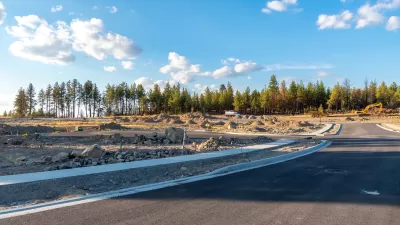The state’s housing shortage is complicated by the growing number of places threatened by wildfires.

California must carefully balance its dire need for more housing with the risks posed by increasingly destructive wildfires which should discourage communities from building in fire-prone areas, writes Dan Walters for CalMatters.
“The friction between those two imperatives is played out in the political arena, where officialdom makes land use policy.” After Governor Gavin Newsom vetoed a bill that “would have required local governments to make fire safety a major factor in approving housing developments in fire-prone areas by compelling developers to include protective features,” claiming it would have allowed cities to avoid meeting their housing mandates, state Attorney General Rob Bonta has taken a series of steps to prevent further development in the wildland-urban interface.
In a set of guidelines released this week, Bonta writes that it is “imperative that local jurisdictions making decisions to approve new developments carefully consider wildfire impacts as part of the environmental review process, plan where best to place new development, and mitigate wildfire impacts to the extent feasible.”
To Walters, “The issue demands something more definitive than a document from the attorney general. Newsom and the Legislature should, as they ramp up pressure for more housing construction, also delineate where it should — and should not — occur.”
FULL STORY: California faces a housing/wildfire conundrum

Study: Maui’s Plan to Convert Vacation Rentals to Long-Term Housing Could Cause Nearly $1 Billion Economic Loss
The plan would reduce visitor accommodation by 25,% resulting in 1,900 jobs lost.

North Texas Transit Leaders Tout Benefits of TOD for Growing Region
At a summit focused on transit-oriented development, policymakers discussed how North Texas’ expanded light rail system can serve as a tool for economic growth.

Why Should We Subsidize Public Transportation?
Many public transit agencies face financial stress due to rising costs, declining fare revenue, and declining subsidies. Transit advocates must provide a strong business case for increasing public transit funding.

How to Make US Trains Faster
Changes to boarding platforms and a switch to electric trains could improve U.S. passenger rail service without the added cost of high-speed rail.

Columbia’s Revitalized ‘Loop’ Is a Hub for Local Entrepreneurs
A focus on small businesses is helping a commercial corridor in Columbia, Missouri thrive.

Invasive Insect Threatens Minnesota’s Ash Forests
The Emerald Ash Borer is a rapidly spreading invasive pest threatening Minnesota’s ash trees, and homeowners are encouraged to plant diverse replacement species, avoid moving ash firewood, and monitor for signs of infestation.
Urban Design for Planners 1: Software Tools
This six-course series explores essential urban design concepts using open source software and equips planners with the tools they need to participate fully in the urban design process.
Planning for Universal Design
Learn the tools for implementing Universal Design in planning regulations.
City of Santa Clarita
Ascent Environmental
Institute for Housing and Urban Development Studies (IHS)
City of Grandview
Harvard GSD Executive Education
Toledo-Lucas County Plan Commissions
Salt Lake City
NYU Wagner Graduate School of Public Service





























